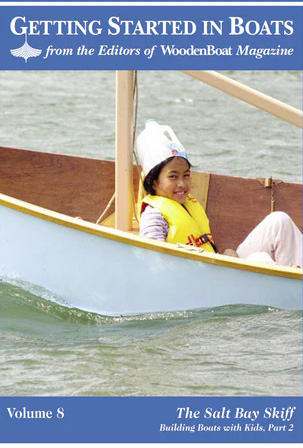In our last installment, my 10-year-old daughter, Ana, and I constructed the hull of our Salt Bay Skiff. This time we’re going to fit her out. We’ll make and install quarter knees, breasthook, thwarts, aft seat, mast supports, rudder, leeboard, and spars. Then, we’ll paint her, install hardware, rig the boat, and go sailing!
Building the Salt Bay Skiff has been fun for Ana and me. For us, the most important thing was to enjoy the project. To do that, we had to learn to adapt to each other’s style. There are many things that a capable kid like Ana can do in this project. She found that she had a lot of math skills (that surprised her), and she took responsibility for much of the layout, having learned to do that cleanly and with precision. I was impressed with her hand tool and hand power tool use. It was a thrill to see her confidence and her abilities grow. We’ll never forget the fun we had.
We begin this section with fitting the quarter knees and breasthook. Be sure to have Part 1 ( WoodenBoat No. 199) nearby for reference.
Make and Fit Quarter Knees and Breasthook

Lay a piece of stiff cardboard over the aft corner of the boat and mark the underside angle. That line depicts the top of the quarter knee and the angle of its two arms. Use the same technique to pick up breasthook information. Refer to the drawing to lay out the cutting angles and other features of the quarter knees and breasthook.


